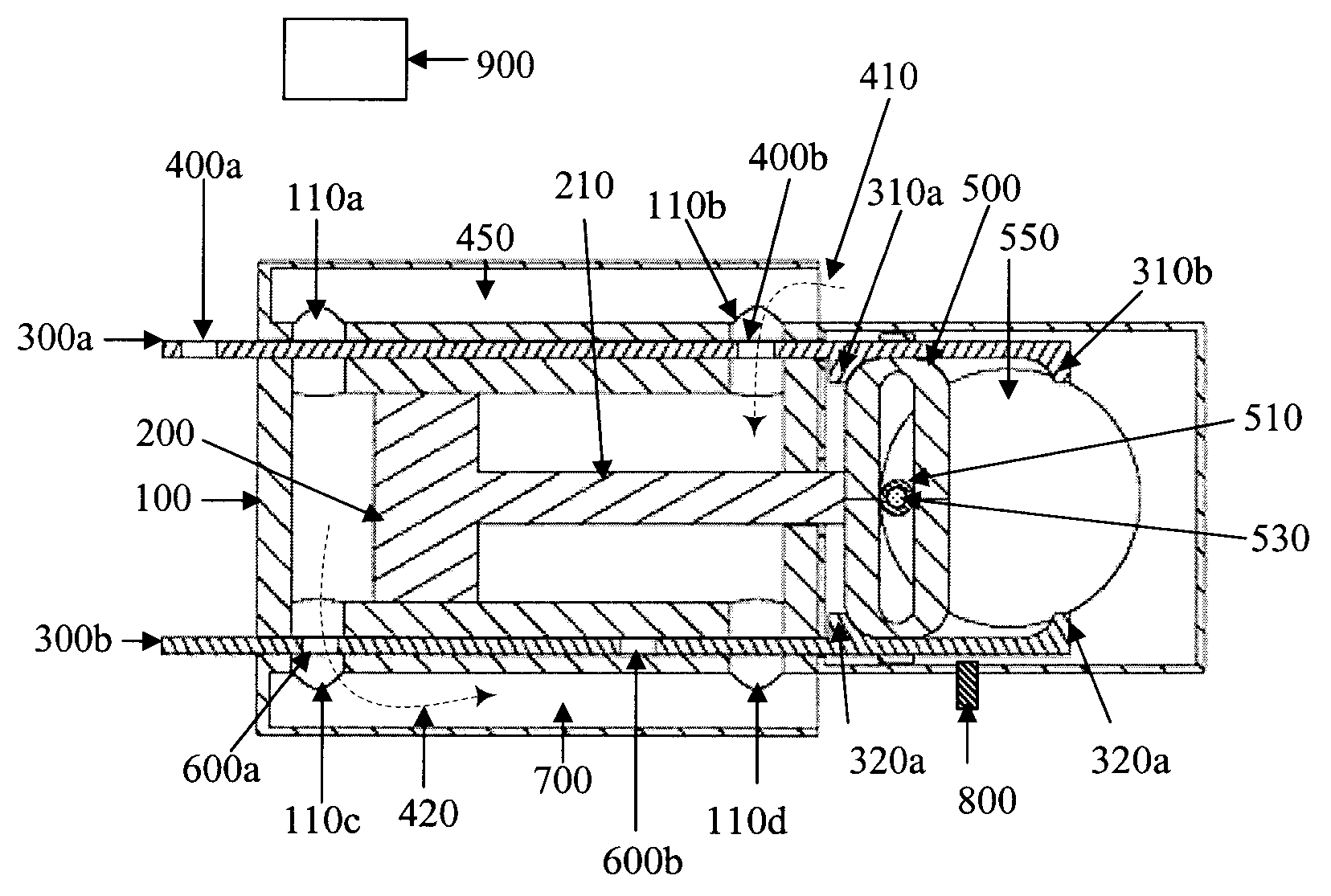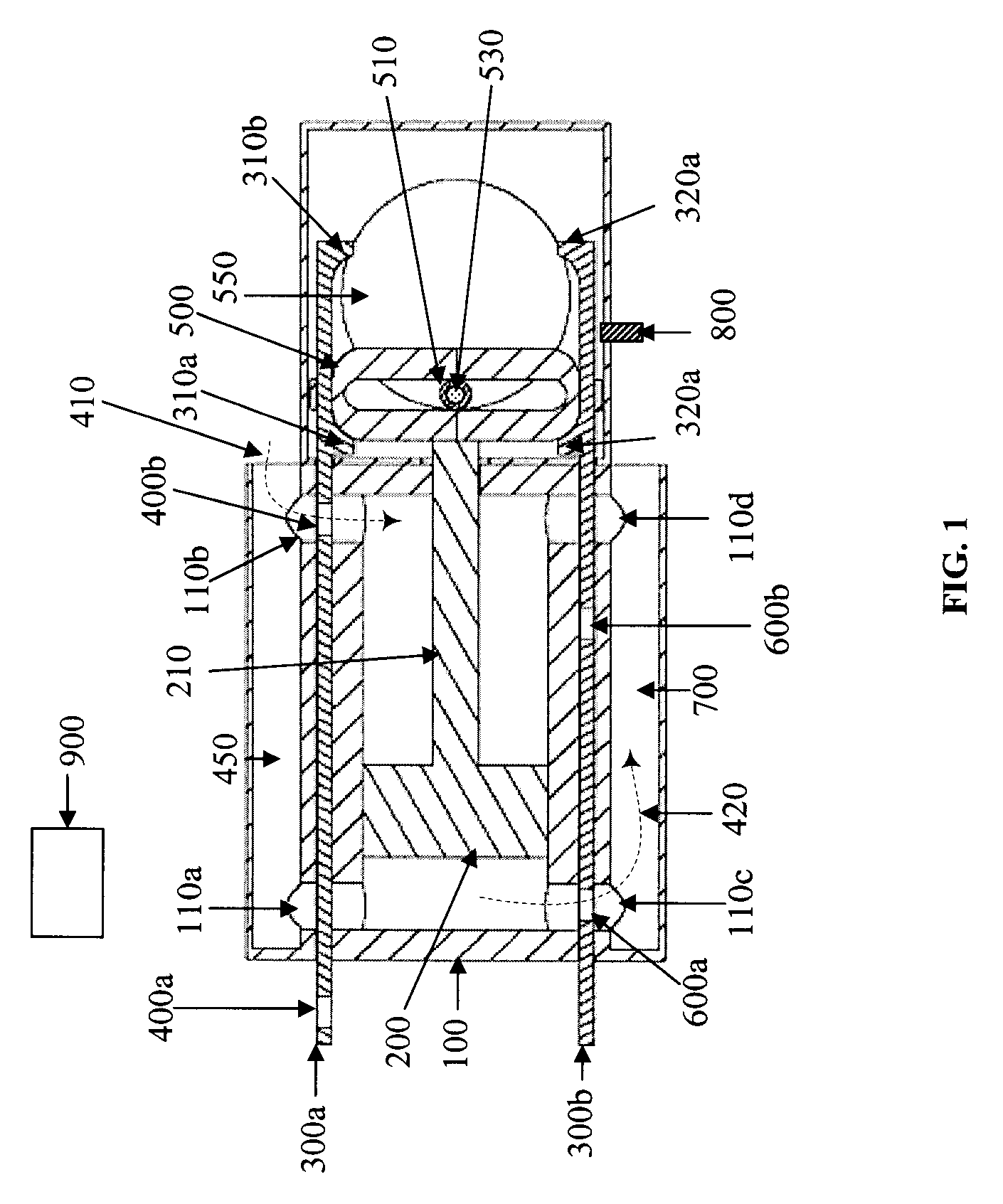Energized Fluid Motor and Components
a technology of fluid motors and components, applied in the direction of fluid couplings, servomotors, rotary clutches, etc., can solve the problems of reducing the energy available to move the piston to supply power, affecting the operation of the valve, so as to increase the density of the incoming air, increase the thrust, and increase the effect of thrus
- Summary
- Abstract
- Description
- Claims
- Application Information
AI Technical Summary
Benefits of technology
Problems solved by technology
Method used
Image
Examples
Embodiment Construction
[0070]As depicted in FIG. 1, the motor of the present invention comprises at least one cylinder 100 enclosing a piston 200. The piston 200 comprises a piston shaft 210 that extends through an end wall of the cylinder 100. Optionally, the piston 200 has at least one ring. The piston 200 is slideable in the cylinder 100. The point of contact of the piston shaft 210 with the wall of the cylinder 100 comprises a seal and or at least one bearing. The size of the cylinder 100 and the length of the piston shaft 210 vary based upon application of the motor. The piston and cylinder are of any design and size acceptable for use in a motor. In an embodiment, a minimal length piston shaft 210 is used to provide higher acceleration.
[0071]In an embodiment, a first sliding bar 300a and a second sliding bar 300b are in communication with a wall of the cylinder 100. A side wall of the cylinder 100 comprises a first set of ports 110a 110b and a second set of ports 110c 110d. The first sliding bar 300...
PUM
 Login to View More
Login to View More Abstract
Description
Claims
Application Information
 Login to View More
Login to View More - R&D
- Intellectual Property
- Life Sciences
- Materials
- Tech Scout
- Unparalleled Data Quality
- Higher Quality Content
- 60% Fewer Hallucinations
Browse by: Latest US Patents, China's latest patents, Technical Efficacy Thesaurus, Application Domain, Technology Topic, Popular Technical Reports.
© 2025 PatSnap. All rights reserved.Legal|Privacy policy|Modern Slavery Act Transparency Statement|Sitemap|About US| Contact US: help@patsnap.com



